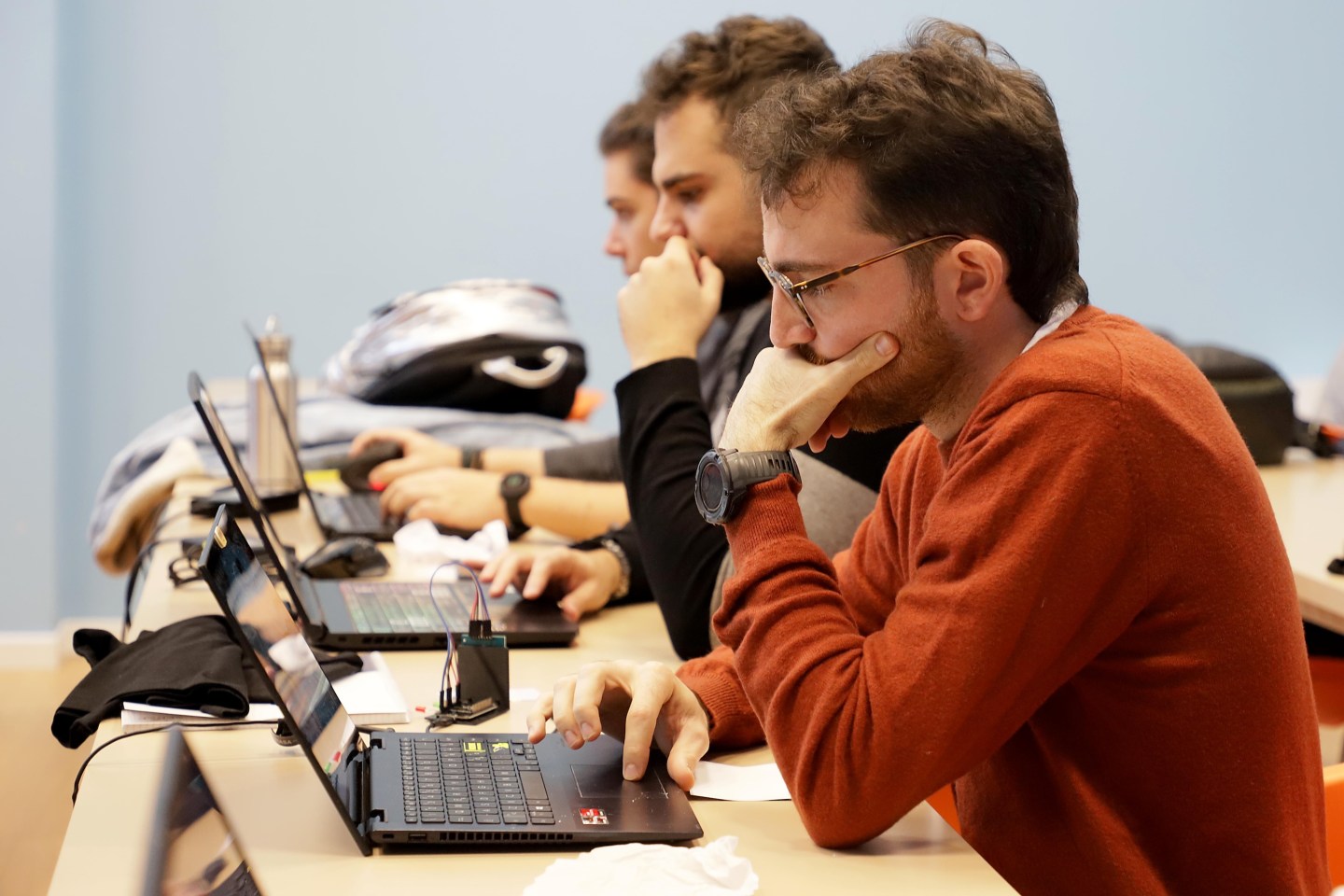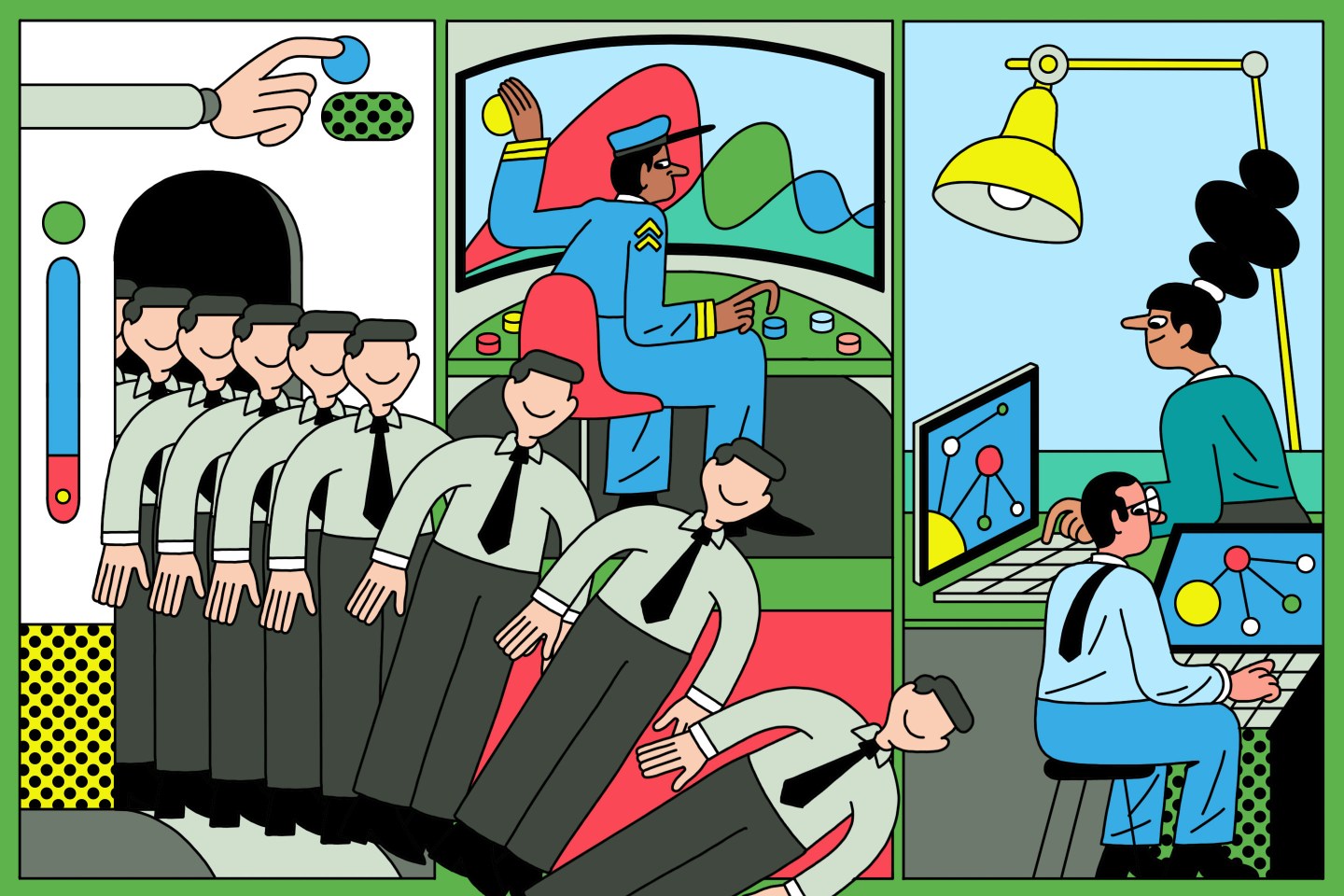Major new technologies have always changed how people work—and artificial intelligence may be the most powerful yet. Many worry this means mass job losses. Our research suggests something more nuanced—and ultimately more hopeful. AI, in its current form, works best in collaboration with people, not in place of them. Making that collaboration succeed—and ensuring people thrive—will require rethinking how organizations develop and use skills, from frontline employees to top executives.
New McKinsey Global Institute (MGI) research finds that AI-powered agents and robots available today are technically capable of performing tasks that occupy about half of current U.S. work hours. It’s a striking but easily misunderstood number. This doesn’t mean half of all jobs will vanish—it means many of today’s work activities could be automated, freeing people to take on different parts of the same work and creating new jobs. How quickly these changes occur depends on business choices about technology adoption. If the history of other technological transformations is any guide, full adoption could take decades.
Still, the potential is enormous. We estimate that pairing people and AI tools, including agents and robots, could unlock almost $3 trillion in economic value in the United States by 2030. Realizing these gains will require reimagining work itself—rethinking processes, roles, and culture so that people and intelligent machines can work together to become far more productive.
Success will also require new skills—not just the technical capabilities to build and govern AI, but also the human and analytical abilities needed to collaborate effectively with these tools. In the past two years, job postings show a sevenfold increase in demand for AI fluency—the ability to use and manage AI. Roles as diverse as SEO specialists, organic chemists, financial reporting managers, and engineers are increasingly requiring the skill—an early sign of broader changes to come.
In the near term, skills such as conflict resolution and design thinking will remain valuable much as they are today because they rely on creativity, contextual understanding, and empathy—qualities that machines cannot yet replicate at a high level. Others, like accounting or claims adjusting, may be better handled by AI. Still others, such as research, data analysis, and project management, could be performed by either people or machines, depending on the context.
MGI’s analysis finds that about 72% of today’s skills can be applied in work that both people and automation can perform. In other words, most existing skills will remain relevant, though people will use them differently as machines take on some of the tasks those skills once supported. This includes many foundational skills—such as communication, management, operations, problem-solving, leadership, attention to detail, customer relations, and writing—which will endure but evolve as people and AI work together.
The hard organizational work lies in combining people and AI thoughtfully to make the most of each other’s strengths. That means building AI fluency across the workforce—from frontline employees to senior leaders—and designing complementary roles in which machines handle routine tasks. At the same time, people set goals, guide them, and check their outputs.
Take problem-solving—spotting issues and then finding solutions. Agents and robots can drill into data sets to identify patterns and generate options. But it is up to people to interpret those findings and decide what to do. In customer relations, for example, agents and robots can handle routine queries, freeing people to focus on building stronger relationships. In healthcare and life sciences, generative AI is beginning to help medical writers compile and draft reports, while people review the output, apply clinical judgment, and ensure accuracy.
The future will be shaped by how smart humans and intelligent machines collaborate. That won’t look like how people work today. Getting there starts with imagining the future and working backwards to redesign entire workflows. Incremental change will not be enough.
Our analysis of 190 business processes found that about 60% of potential productivity gains are concentrated in sector-specific functions—activities at the core of each industry. In manufacturing, the opportunities cluster in supply chain management; in healthcare, in clinical diagnosis and patient care; and in finance, in regulatory compliance and risk management. The remaining gains come from cross-cutting functions that support operations across industries, such as IT, finance, and administrative services.
Leading companies are already experimenting. One global technology company is using AI to redesign its sales workflow from start to finish. First, a prioritization agent scores and ranks accounts, using a wide range of public and proprietary data. Then, other agents support customer outreach, with a scheduling agent setting up calls and reminders for high-potential leads. Salespeople then manage customer discussions and orchestration across a portfolio of opportunities. The result: 7 to 12% higher revenue and about 40 to 50% time saved—hours that could be reinvested in serving clients more directly. Of course, not all initiatives will be this straightforward, and the company is still learning how to rethink its processes, but the example offers a glimpse of the possibilities.
AI has the potential to transform businesses and the fabric of our work. The leaders who succeed will harness technology to elevate human potential: retraining people for higher-value work, organizing around skills rather than job titles, and measuring success by how effectively people and machines work together to deliver better results.
The opinions expressed in Fortune.com commentary pieces are solely the views of their authors and do not necessarily reflect the opinions and beliefs of Fortune.











